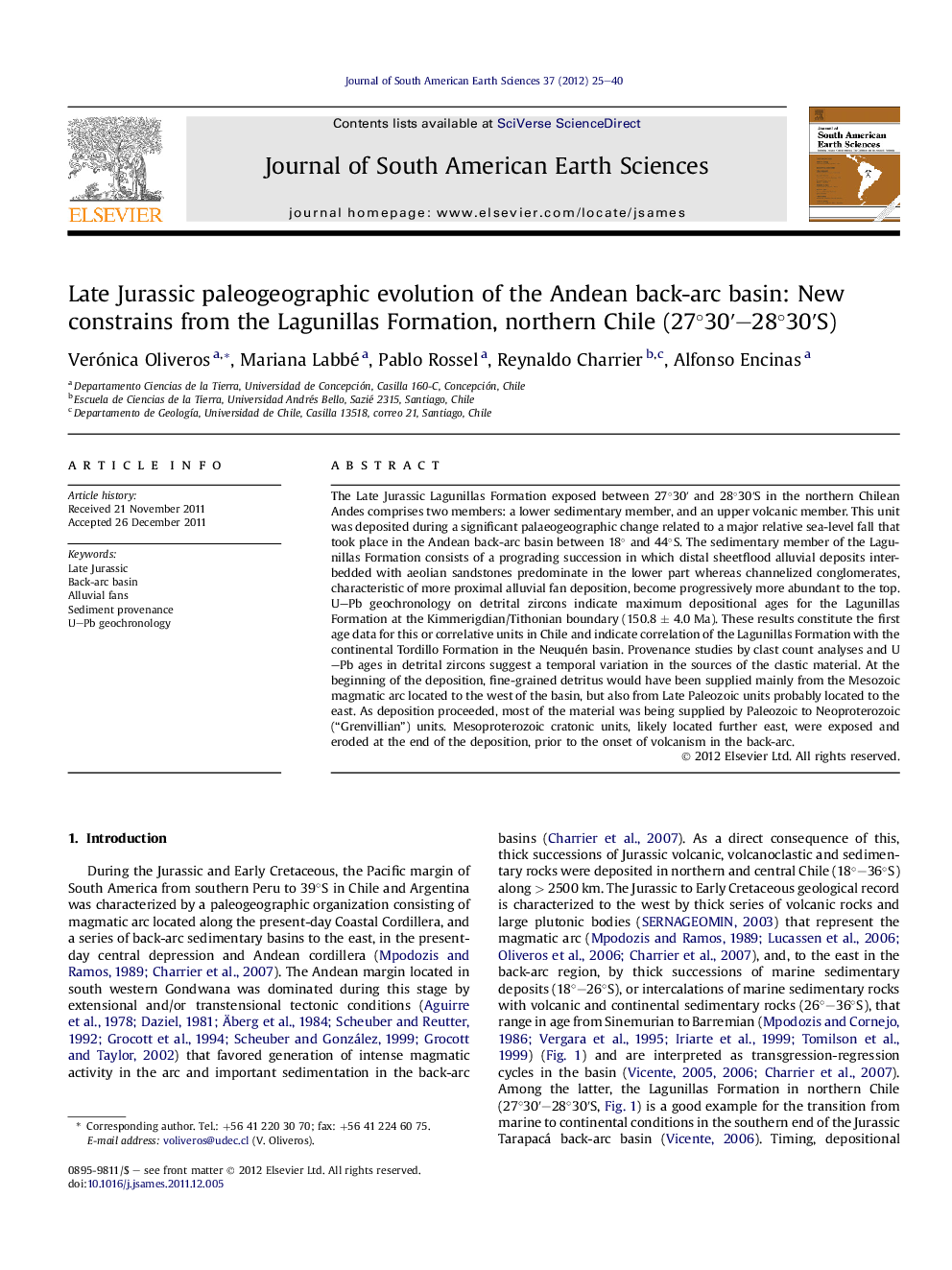| کد مقاله | کد نشریه | سال انتشار | مقاله انگلیسی | نسخه تمام متن |
|---|---|---|---|---|
| 4682539 | 1635172 | 2012 | 16 صفحه PDF | دانلود رایگان |

The Late Jurassic Lagunillas Formation exposed between 27°30ʹ and 28°30ʹS in the northern Chilean Andes comprises two members: a lower sedimentary member, and an upper volcanic member. This unit was deposited during a significant palaeogeographic change related to a major relative sea-level fall that took place in the Andean back-arc basin between 18° and 44°S. The sedimentary member of the Lagunillas Formation consists of a prograding succession in which distal sheetflood alluvial deposits interbedded with aeolian sandstones predominate in the lower part whereas channelized conglomerates, characteristic of more proximal alluvial fan deposition, become progressively more abundant to the top. U–Pb geochronology on detrital zircons indicate maximum depositional ages for the Lagunillas Formation at the Kimmerigdian/Tithonian boundary (150.8 ± 4.0 Ma). These results constitute the first age data for this or correlative units in Chile and indicate correlation of the Lagunillas Formation with the continental Tordillo Formation in the Neuquén basin. Provenance studies by clast count analyses and U–Pb ages in detrital zircons suggest a temporal variation in the sources of the clastic material. At the beginning of the deposition, fine-grained detritus would have been supplied mainly from the Mesozoic magmatic arc located to the west of the basin, but also from Late Paleozoic units probably located to the east. As deposition proceeded, most of the material was being supplied by Paleozoic to Neoproterozoic (“Grenvillian”) units. Mesoproterozoic cratonic units, likely located further east, were exposed and eroded at the end of the deposition, prior to the onset of volcanism in the back-arc.
► We studied the Late Jurassic Lagunillas Formation in the Tarapacá back-arc basin.
► Its sedimentary member represents a prograding succession of deposition from distal to more proximal parts of alluvial fans.
► The source of sediments changed with time, increasing the cratonic material and decreasing the Andean material.
► The Lagunillas formation can be considered as an equivalent to the red continental units of the Neuquén basin.
Journal: Journal of South American Earth Sciences - Volume 37, August 2012, Pages 25–40